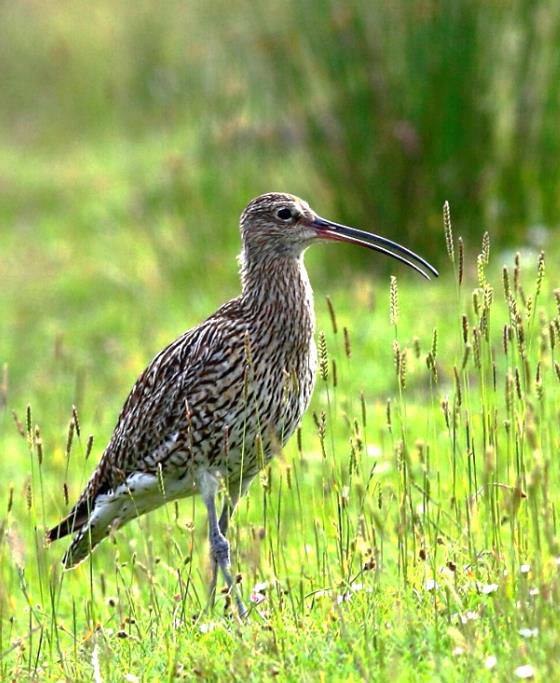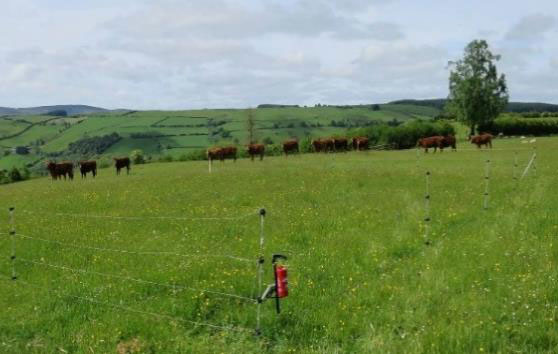Farmers around Clee Hill who still have Curlews on their land are the lucky few. Local farmers have told us stories of marking nests in the past, before mowing, to avoid them where possible. It is clear there is a great deal of affection for Curlews amongst local inhabitants.
In spite of this, their breeding success is very poor, and unless this is reversed Curlew will soon die out in the area. The local population has declined by 38.5% in only 6 years, and there are now less than 10 pairs. There is a real danger that their haunting, bubbling call, will be lost for ever.
We’ve been looking for local Curlews since 2012, so we know where the territories are, and that gives us a good start. But we need to go further. We must try to ensure that eggs hatch, and chicks survive to fledging, and where they don’t, we need to find out what’s causing the failures. To do that, we need to find the nests, protect them, and then follow the chicks to fledging. The Wildlife Group has never attempted to find the nests before.
The protection involves putting a small electric fence (25 metres square) around the nest, which has been shown to make a big improvement in hatching success, then radio tagging chicks to see what happens to them.
The plan will only work if it involves, and has the support of, farmers. In 2018 we briefed all the farmers who had, or might have had, Curlews nesting on their land in 2017, and most were visited, to explain what’s involved, answer any questions, and ask for support and the necessary permissions. We adapt the plans to fit in with the requirements of each farm.
We’ve secured funding for professional help with all this. Our surveys are carried out by volunteers, we need to pay for experts to locate and fence nests. Electric fencing and radio tags for chicks also need to be bought.
We would welcome the active involvement of farmers to spread the word within the farming community, and encourage people to tell us where the Curlews are.
In 2018, three nests were found and fenced, all these nests survived, and one, probably two, young fledged. We learned a lot, and want to continue this work in 2019. To start with, we need to locate the Curlews that come back this year.
Wildlife Group members will be out looking for them, from Public Rights of Way, from the end of March, but any other records, especially from landowners, could be very important.
If you want to help, or see or hear any Curlews, please tell
Chris Bargman 01299 270514, chcwg@shropscwgs.org.uk
This project is part of the SAVE OUR CURLEWS campaign, funded from a joint appeal by SHROPSHIRE WILDLIFE TRUST andSHROPSHIRE ORNITHOLOGICAL SOCIETY
More details can be found on-line (www.shropshirebirds.com/save-our-curlews).


Watch the tutorial on how to add the correct links for the buttons below.